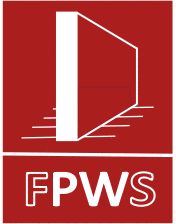Why does it exist, when is it relevant, and who does it apply to?
The Act relates to certain defined categories of building work and requires those intending to carry out such work (Building Owners) to notify the owners of adjoining property (Adjoining Owners) before its commencement.
The intention of the Act is to protect the interests of both parties i.e. to prevent unreasonable delays being caused to work proposed by Building Owners whilst also protecting the rights of Adjoining Owners whose property could be affected by the works. The Act lays down procedures that must follow the service of notice, the nature of which will be determined by the Adjoining Owner’s decision to consent or dissent.
The term “owner” is defined in the Act, and principally includes freeholders, and leaseholders with an interest exceeding a term of one year.
The procedure is triggered by service of notice, and if an owner commences such work without serving notice, Adjoining Owners would be able to insist on a halt until the position is regularised.
Categories of work
Without going into great detail, building work covered by this legislation is in the following broad categories:-
(a) Work affecting existing party walls. (Party Structure Notice).
(b) Construction of new party walls or boundary walls. (Line of Junction Notice).
(c) Excavations within 3 metres of an Adjoining Owner’s building or structure, which will be deeper than the latter’s foundations. (Three Metre Notice).
(d) Excavations within 6 metres of an Adjoining Owner’s building or structure which will cut through a plane drawn down at 45º towards the Building Owner’s new building from the point formed by the intersection of the base of the Adjoining Owner’s foundation with the outer face of his external wall. (Six Metre Notice).
Procedures
Except for the construction of new party walls, which require an adjoining owner’s written consent, Building Owners have the right to carry out works in the above categories but must give all Adjoining Owners notice of their intention to do so. The required period of notice is two months for Party Structure Notices, and one month for the other types of Notice.
In the case of Line of Junction notices, a Building Owner must obtain consent to a proposal to build a new party wall, but may proceed with construction of a new boundary wall (situated on his own land) after the notice period has run (1 month) unless the adjoining owner raises matters that need to be settled.
In the cases of the other types of notice, Adjoining Owners may either consent or dissent upon receipt of notice. The right to dissent does not mean that an Adjoining Owner can prevent the proposed work from being carried out, but that they wish the full procedure of the Act to be followed as explained below. Whether or not the Adjoining Owner dissents, the Building Owner cannot commence the work until the period of notice has expired without the express written consent of the Adjoining Owner. Where there is dissent, the work must also await service of an Award.
Where an Adjoining Owner dissents from a notice, or where matters for settlement are raised following service of a Line of Junction Notice, both parties must appoint surveyors or agree upon the appointment of a single surveyor to settle the matter by Award (a formal written agreement).
Where an owner fails to appoint a surveyor, the other party may make the appointment on his behalf.
The appointment of a party wall surveyor is a statutory appointment and the relationship thereafter is appointing owner/surveyor rather than client/surveyor. Appointing owners may not subsequently dismiss their surveyor.
The contents of the Award are decided by the surveyors, who are obliged to act in an impartial manner. However, clearly surveyors will be looking to ensure that their appointing owner’s reasonable interests are catered for by the Award. Once served on them, Owners may appeal an Award to the County Court within 14 days if they consider the surveyors have erred or exceeded their authority under the Act. Subject only to a successful appeal, the Award will become binding upon both Owners 14 days after its service.
Immediately following their appointments the two surveyors will select a Third Surveyor, usually a known party wall specialist, who will be asked to settle any matter upon which they are unable to agree. Reference to the Third Surveyor is very rarely required.
What does an award include?
An Award will usually cover the following:-
(a) Details of the work the Building Owner is entitled to execute.
(b) Qualifications relating to the manner and timing of execution of the work.
(c) Conditions to protect the interests of the Adjoining Owner in terms of safeguarding their building, safety, cleanliness, rectification of damage, security etc.
(d) Rights of inspection and access.
(e) Liability for fees and costs.
(f) A Schedule of Condition of the Adjoining Owner’s property.
Who pays for what?
The costs associated with party wall work are almost always borne exclusively by the Building Owner. However, under some circumstances, where the Adjoining Owner benefits from the proposed work, or where he requires the Building Owner to include additional work for his benefit, the Adjoining Owner will be obliged to contribute towards the costs.



